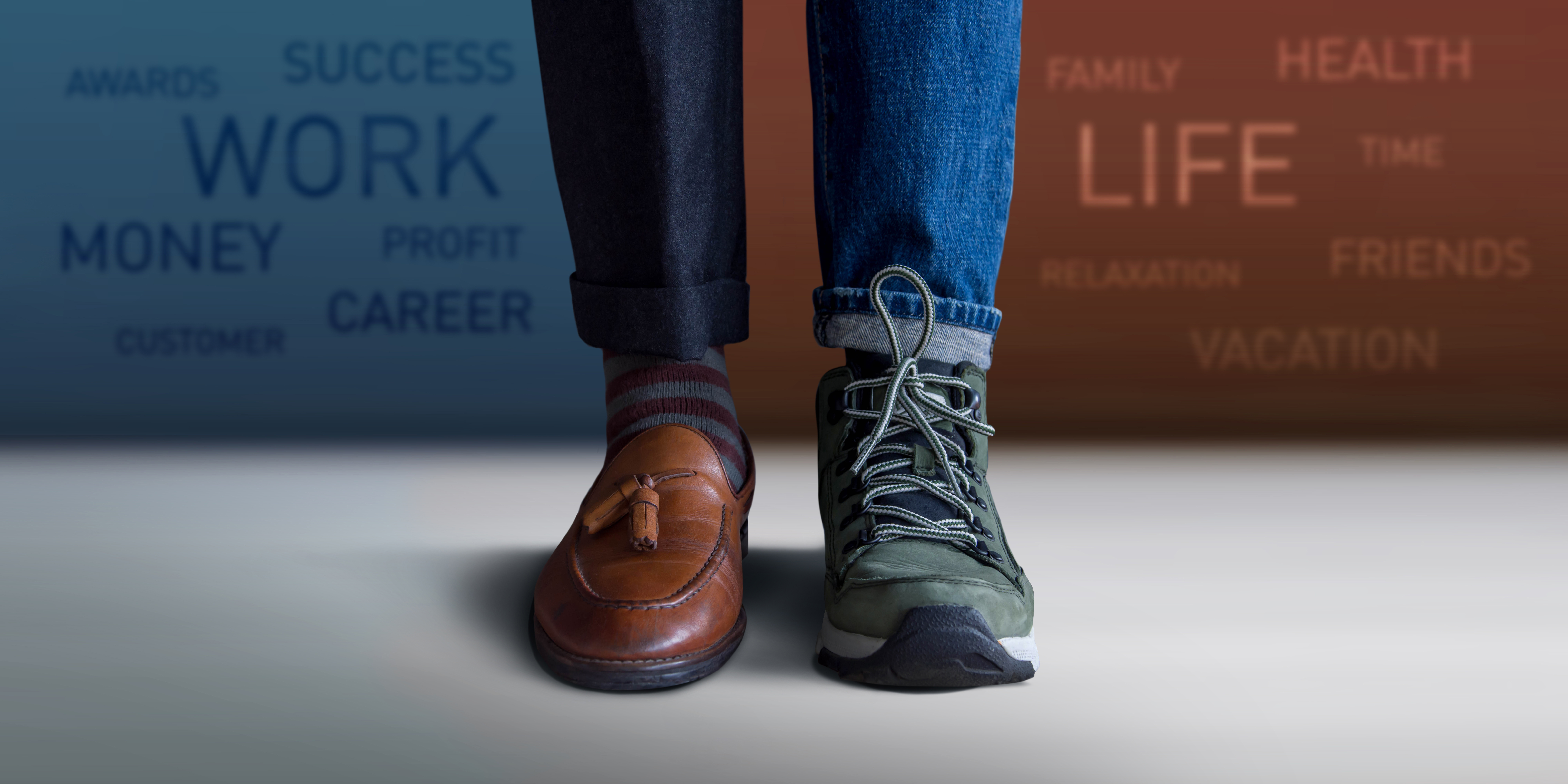I’m OK…You OK? Evaluating, protecting and encouraging your team’s mental wellness
The last year and a half have not been good for mental wellness.The pandemic and its resulting lay-offs, remote work, onsite work, work where the rules changed daily, the “stay 6 feet away” habit (both emotionally and physically) the incessant roller coaster of safety vs. threat, isolation and for many, loved ones who became sick or died, have taken their toll on cumulative mental health.
Research by Oracle and Workplace Intelligence found that 2020 was the most stressful year people have ever experienced in their working lives. Some notable findings: 78 percent of the workers surveyed indicated the pandemic negatively impacted their mental health, 76 percent said companies should be doing more to protect workers’ mental health and 85 percent said newfound work-related stress is affecting their home lives.

But wait, there’s more. This has not only been a pandemic phenomenon. According to John Hopkins research:
- An estimated 26 percent of Americans ages 18 and older—about 1 in 4 adults—is affected by a diagnosable mental disorder in a given year.
- Many people live with more than one mental disorder at a given time. In particular depressive illnesses tend to co-occur with substance abuse and anxiety disorders.
- Approximately 9.5 percent of American adults ages 18 and over will be affected by a depressive illness (major depression, bipolar disorder or dysthymia) each year.
- The trouble is nobody talks about it.
If an employee breaks a leg there’s little shame in expecting rehabilitation time, work environment accommodation, possibly a flexible schedule and a host of empathetic teammates ready to run errands and sign the cast. The employee may be embarrassed at how the injury occurred, but a broken leg is not, for most, so shameful they would attempt to hide their condition (despite obviously having a difficult time doing so).
Not so when it concerns the health of the brain, the body’s most important organ. The employee may have difficulty coming forward due to concerns over how co-workers and supervisors may perceive them. Some mental disorders result in a struggle to recognize something wrong or allow personal acceptance of an individual’s mental health issues. Mostly though, mental disorders are stigmatized to a degree unlike other bodily disabilities or challenges. “Psycho,” “nuts,” “crazy” and “disturbed” are some of the most common descriptions used to describe those living with mental disorders, and it is not unusual for people to fear and steer clear of the individual affected by a mental health issue.
This combination of factors is likely to impact team engagement, productivity, efficiency and overall team wellness. As an employer, what can you do?
Take the Time to Learn
Very little is commonly known about mental illness, which is why people fear it.
You and your team are not clinicians, and mental health disorders can be difficult and complicated to diagnose. The point of insight is to increase awareness regarding possibility, rather than ignoring, or assuming a behavior is intentional.
Take the time to learn about different types of mental disorders, and resulting behavioral changes, then teach your team to avoid jumping to conclusions regarding behavioral changes.
If, for example, a team member suddenly starts calling in sick, and is persistently tardy when previously very prompt, help the team to look a bit further than “they’re just lazy.” Start thinking about how mental wellness may be impacting performance.
Research and provide resources to your team, regarding different types of mental disorders and what each might look like. Anxiety disorder, for example, is the most common mental health concern in the U.S. More than 40 million adults (possibly higher with COVID) currently live with an anxiety disorder. Signs might include irritability, worry, restlessness and inability to sleep.
Get ahead of stressors—Pre-emptive strike
COVID stressors have been an extreme example of how environment, change and uncertainty play a role in mental health outcomes. As an employer, it is important to demonstrate a holistic approach to mind-body health.
Be a model of wellness
As a leader, you dictate, through the way you conduct yourself, how to behave, and what is important. Serving as an example of wellness and balance will speak volumes to your team.
What kind of example are you? If you are firing off emails at 6:30 on Saturday morning, your team will expect they should, too. If you use your PTO, and truly take a vacation, your team will know that is the expectation. Conversely, working during your “supposed” vacation will send another message.
It’s not enough to say you prioritize balance and wellness. Your actions, and the actions of your managers and supervisors, will demonstrate commitment. Being open about therapy, struggles and challenges will encourage others to do so, as well.
A whole new world of work
Provide a clear understanding of when people should be working—and when they shouldn’t. Examine attitudes—is the term “workaholic” referred to in a positive way? Does your company implicitly reward or allow supervisors to work and interact with their teams while on vacation? Emergencies aside, this sort of behavior encourages or even guilts people into feeling they must behave similarly.
For remote workers, provide a clear start and end to each day. Consider implementing “No meeting days” to allow for heads down project work that ends up getting taken home due to distractions. All work and no play make everybody dull. Encourage and participate in social interactions and events, virtually and in-person, and be sure none of your leaders discuss how much work is sitting back at the office, or how busy or overwhelmed they are. You set the direction, and the expectation. Others will follow.
Ask and receive
To detect simmering mental health issues before they emerge, regularly seek insight through anonymous pulse surveys. Not only can these surveys provide a glimpse of overall team wellness, they can reveal specific stressors individuals are struggling with and allow for solutions and support.
What’s important?
Revisit your company’s values. There has been a profound shift in the way we work, interact and play, and it continues to change. “The Great Resignation” or “Life’s too Short, I Gotta Go” phenomenon is real, and reflective of human priorities. Do the values your company embraces speak the same they did as pre-COVID? If so, re-alignment, with a focus on flexibility and support may be in order. Make sure wellness is part of quarterly reviews and weekly one-on-ones.

General warning signs
The following signs may be indicators of a mental illness. Some mental disorders allow the individual to function normally for many years between episodes. Others are pervasive, chronic, and can be debilitating. Individuals may display one sign or many. The point is to be aware of the possibility and open the door to help.
- Excessive worrying or fear
- Feeling excessively sad or low
- Confused thinking or problems concentrating
- Extreme mood changes, including uncontrollable “highs” or feelings of euphoria
- Prolonged feelings of irritability or anger
- Avoiding friends and social activities
- Difficulties relating to others
- Changes in sleeping habits or feeling tired and low energy
- Changes in eating habits
- Changes in sex drive
- Difficulty perceiving reality (delusions or hallucinations, in which a person experiences and senses things that don’t exist in objective reality)
- Inability to perceive changes in one’s own feelings, behavior or personality (“lack of insight” or anosognosia)
- Overuse of substances like alcohol or drugs
- Multiple physical ailments without obvious causes (such as headaches, stomach aches, vague and ongoing “aches and pains”)
- Thinking about suicide
- Inability to carry out daily activities or handle daily problems and stress
- An intense fear of weight gain or concern with appearance
Let’s talk
Opening up a conversation that could be deeply personal in nature may seem overwhelming. The best approach is honesty and simplicity.
- Just Ask: In the same sentence you ask about a team-member’s allergies, ask about their mental health. It might look something like this—“Jan, how have your allergies been lately? What about your mental health? How have you been feeling? I know times have been stressful. Let me know if I am overstepping.” Or, during a one-on-one, say “We talked about your workload and responsibilities, but what about you? How is your mental health doing?”
- Share Your Own Struggles: “My anxiety has been keeping me up at night. I am so worried about the kids and this upcoming school year. What about you?”
- Don’t try to fix people: Mental health issues are deeply personal. To say something like, “Well, cheer up, it could be worse” is demeaning, and insinuates the person just needs to pick themselves up and carry on. Struggles are real, and a pep talk won’t help.
- Various technique: When attempting to speak to an individual regarding a specific mental health disorder, Bring Change 2 Mind offers a talking resource that features a useful variety of discussion scenarios.
Mental disorders are not adjectives
Stigma is driven through words and attitudes. Insist on eliminating common phrasing or descriptions that fuel negative perceptions of mental illness.
A few examples might include:
- “They’re ill.” People don’t want to be labeled as sick.
- “The crazy resident in B101 is at it again, or “That resident is insane.” Just say no to these sorts of phrases.
- “She’s so bipolar!” Mental disorders are not adjectives. It is not acceptable to refer to someone who has cancer as “cancerous,” so don’t refer to someone who has schizophrenia as “psycho.”
- “You look so anorexic!” “My OCD is coming out again.” “He’s psychotic!” Teach your team to recognize how these terms fuel stigma and insist they stop using them
Spirit mind body
Benefits should reflect a holistic approach to wellness and encourage mind/body parity. What affects the mind, affects the body, and what affects the body, affects the mind. Robust mental health coverage through insurance offerings, wellness benefits that include mind and spirit are ways to create a whole-person centered program.
Empathy, willingness to talk about our own struggles, and focus on mind/body parity will reduce stigma, encourage behaviors that keep our teams well, and provide support when they’re not.
Lori Snider is a mental health advocate and leading multifamily marketing, learning and experience expert, currently serving as Head of Learning and Team Experience for RedPeak. She is an acclaimed industry expert on sales and service trends, and a recognized and frequent national conference presenter (NAA, MFE) whose presentations are lively, relevant and full of laughter. Contact Lori at 303/517-2006 or lsnider@redpeak.com
